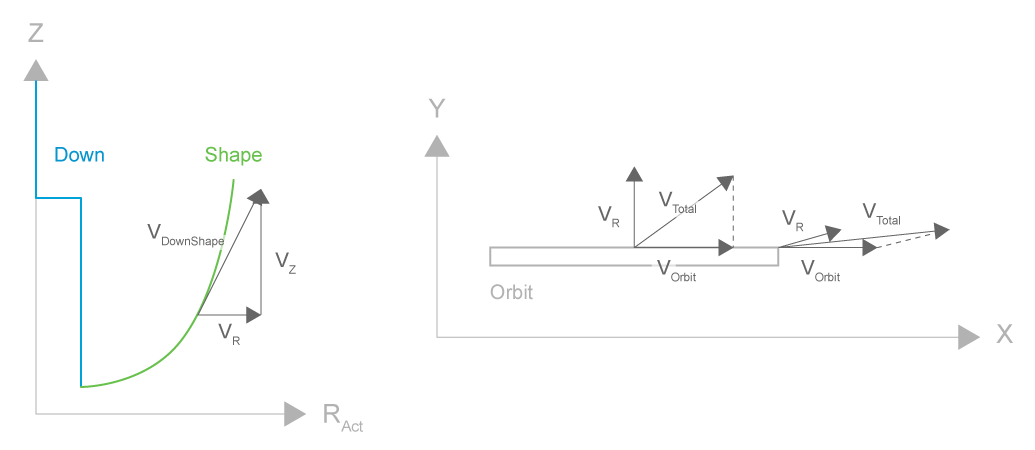Dynamics limitations
In the orbiting function, the resulting electrode motion is obtained from superposition of the three channels. The dynamics of the individual channels must be limited in these phases so that superposition does not result in a violation of axis dynamics. Since only the down or escape channel may move the electrode during erosion on the path, a weighting is not necessary in this phase.
The figure below shows the radial, tangential and total velocity vectors at sample points in the orbit and down channels.

The following applies to the path velocity vector in the down channel:
The same applies to the path velocity vector in the orbit channel:
Since the two channels are superimposed, the total velocity is therefore: 
Due to the dynamic limitations of the machine, the following applies: and
and 
For the maximum total velocity  the two cases shown on the right in the above figure are the result:
the two cases shown on the right in the above figure are the result:


However, it is advisable to limit the maximum dynamic range of each channel to half of its maximum value to ensure that the maximum dynamic range is not exceeded at any time.
This can be achieved using the code lines
N0150 G128=50 ; velocity
N0160 G131=50 ; G1, G2, G3 acceleration
N0170 G231=50 ; G0 acceleration
N0180 G133=200 ; G1, G2, G3 ramp times
These lines were already used in previous program examples.
Alternatively, dynamic values can also be limited in each channel using the #VECTOR LIMIT ON command. However, it must be noted that the effective feedhold accelerations are also limited depending on the P-CHAN-00097 command. When the stop command is used in critical cases where an overshoot of maximum axis accelerations is insignificant and deceleration is more important within the shortest possible time, feedhold can be commanded using the e_feedhold control unit.
It must also be noted that the maximum path velocity must be limited for simultaneous motion in the down and escape channels.